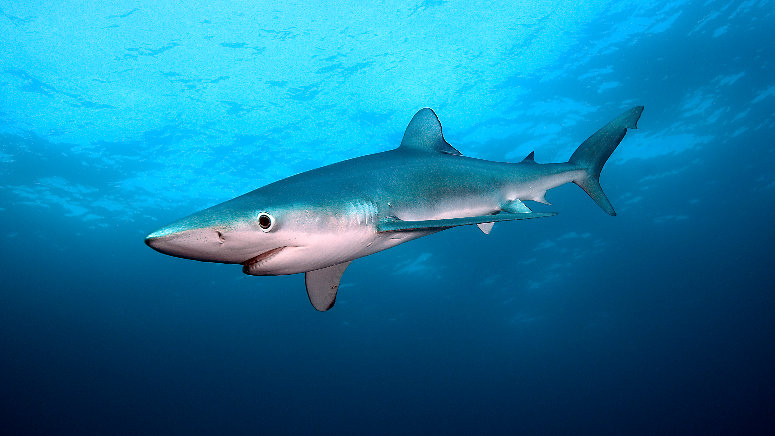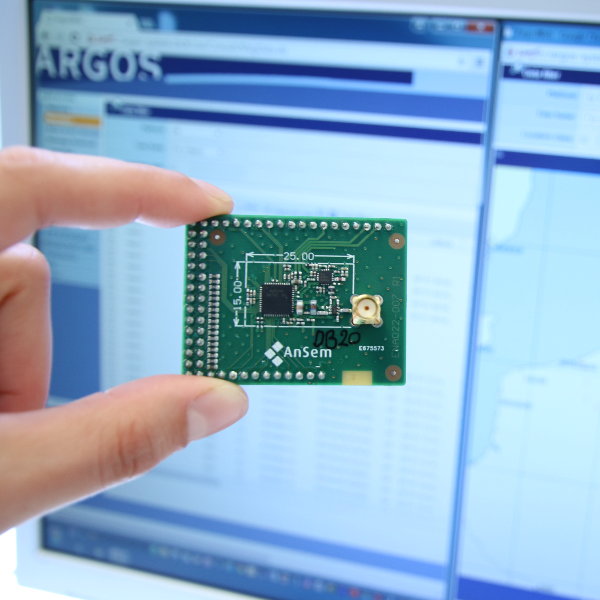
Satellite monitoring of wildlife has become a critical tool for environmental research and nature preservation. In acknowledgement of this, ESA has been supporting the development and testing of a new low-cost wildlife tag. Currently being developed in an on-going ARTES 5.1 activity, the new system works in conjunction with the Argos satellite monitoring system, a non-profit initiative established in 1978 that is dedicated to helping the research community monitor and better understand the environment. Argos is operated by CLS (FR), a leading provider of satellite services for environmental and maritime applications.
![]() The new tag developed in this ARTES 5.1 activty has a tiny transmitter powered by a battery or a solar panel that sends messages of short duration (less than one second) to the Argos constellation, whose six satellites circle at 850 km in polar sun-synchronous orbit, meaning they pass over a given location on Earth at approximately the same time each day.
The new tag developed in this ARTES 5.1 activty has a tiny transmitter powered by a battery or a solar panel that sends messages of short duration (less than one second) to the Argos constellation, whose six satellites circle at 850 km in polar sun-synchronous orbit, meaning they pass over a given location on Earth at approximately the same time each day.
Currently available wildlife tags that use the Argos 1/2 first-generation satellite services are rather inefficient, with poor battery life and low data collection volumes. The goal of this ARTES project is to develop a low-cost tag which can take advantage of the newer, more sophisticated Argos 3/4 services. With the support of ESA, a new microchip, called ARTIC, was developed by the Belgian semiconductor company AnSem; it is now being integrated into a new animal tagging system by the Icelandic company Star Oddi.
Initially the new tag will be used to track migrating marine animals, as this is the biggest challenge from a technology point of view, but in the future it could be used for terrestrial wildlife and birds as well.
The key improvements include smaller weight and size, increased lifetime, expanded data storage, and bidirectional communication with the satellite, which results in improved data transfer rates.
 The latest version of AnSem's ARTIC has 250 mW transmitting power, sufficient to be able to reach the satellite without an external power amplifier. It contains sensors for pressure (depth), temperature, light and tilt, the latter to allow 3D mapping.
The latest version of AnSem's ARTIC has 250 mW transmitting power, sufficient to be able to reach the satellite without an external power amplifier. It contains sensors for pressure (depth), temperature, light and tilt, the latter to allow 3D mapping.
“Bidirectional communications are key here,” says Stefan Gogaert, CEO of AnSem. “Without it, the tag keeps continuously uploading data, which takes a lot of power. With the bidirectional communications supported by Argos 3/4 and implemented in this ARTES 5.1 project, we introduce a handshake sequence so that the tag knows that the data has been received by the satellite. This radically improves battery life.”
These first samples of the ARTIC chip have passed certification at CLS. In the next stage of the project, commencing in June 2016, five bluefin tuna and five basking sharks will be tagged io validate the new system. “In mid-2016, we hope to start commercial production of the ARTIC chips,” says Gogaert.
“There are competing satellite monitoring systems in use, but the advantage of Argos 3/4 is low output power requirements and small size,” says Michel Guigue, Data Collection and Missions Manager at CLS. “We can provide solar satellite tracking solutions as light as 2 or 3 g with output power of just 200 mW. Argos uses a basic satellite communication protocol which makes the system very robust in harsh conditions. Other systems require larger modems that need at least 2 W output power and very good conditions, such as you find on land. For birds and fish, Argos is the only option.”
“The monitoring of migrating marine animals is essential for understanding the impact of global changes and increasing human activities on the marine eco-system,” says Peter de Maagt, Head of the Antenna and Submillimetre Wave Section at ESA. “This ARTES-supported project should make an important contribution towards that aim, and eventually improve our knowledge of many different kinds of wildlife."
"This activity shows how ARTES can both benefit society and push technological advancement at the same time,” de Maagt says.




